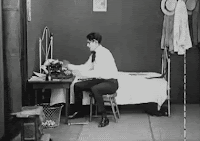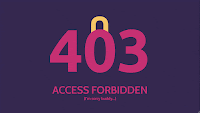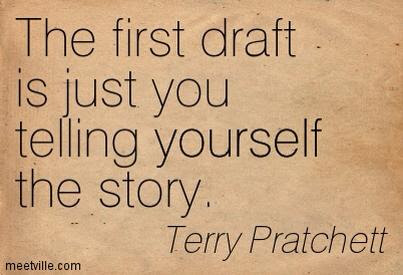Category: drafts
April 30, 2020 / 2 Comments
A2Q Part Eleven—Revisions
Getting close to the end now.
I want to talk now about incorporating feedback. I know to some folks this doesn’t sound like a vital part of “writing my first novel,” but I personally think it is. One of the reasons my “college novel” (Trinity) crashed and burned was that I got really hung up on early feedback. I tried to figure out how to please everyone because I gave everyone’s thoughts equal weight. I still see that happening today—people who want to somehow listen to every voice and incorporate every note. Even contradictory ones. I’ve seen people spend years trying to do this.
Also I know it may also seem a bit weird that this part and the last one have been split into two posts. It might seem feedback and revisions go hand and hand. On one level, yeah, they do, but I think the criticism half of it is important enough to warrant its own focus for a bit. Being able to accept feedback from knowledgeable sources is a big thing for a writer. It’s taking a huge step forward. And I think it’s really, really tough to write a good book if I can’t take that step. So it really is a separate, important step in the process.
Plus, splitting them up this way gave me an even twelve parts for the A2Q.
All that said, let’s talk about incorporating notes
The first thing we need to talk about is sorting the feedback. Not all criticism is created equal and valid, despite what that guy on the internet shrieked at you. We need to take those fifteen page packets of notes, and the copies of your manuscript with notes up and down the margins, and figure out what’s what. You can do this on the fly, break it all down before you actually start the revisions, or whatever works for you.
I think the overwhelming amount of feedback we get is going to fall into one of three categories—opinions, advice, and facts. Being able to figure out which one’s which is going to be tough. It’s also going to be a skill you can use forever. It’ll help you throughout your writing career, and probably in other parts of your life, too. A lot of folks think their angry opinions are facts. Some folks think they’re offering advice when it’s just an opinion. And some writers (yeah, it’s on us too) hear facts and advice and think they’re just opinions.
Let’s go over them.
First up is opinions. An opinion is someone’s personal thoughts about a topic (in this case our clearly flawless werewolf manuscript). Opinions don’t need anything else behind them. They can just be a gut response. They’re super-subjective and they can carry a lot of baggage.
They’re also, by and large, the first thing to toss. If someone’s just scribbling “that’s stupid” in the margin or “werewolf stories are so overdone,” I tend to ignore them. I once had a beta reader cover The Suffering Map with red ink because they decided everything in the manuscript was wrong because characters made decisions they didn’t like.
Now, I’m not saying opinions have no value. They do, but only in a “general direction” sort of way. An individual opinion really doesn’t mean much, in this instance, while a dozen identical opinions have a bit of weight. Maybe. If only one person thinks I telegraphed Luna being the werewolf too much, they’re probably just reading too much into it. I know some folks who have a bad habit of retroactively adjusting their awareness/expectations, so they “always” saw that twist coming (because if they didn’t, it means they got tricked like everyone else). But if most of my beta-readers (and agent and editor) think I telegraphed it… maybe I did.
Next is advice. In pretty much any sense, this is thoughts and ideas that have an actual rationale behind them. A big difference between advice and opinions is I can almost always explain the reasoning behind my advice in an objective way. I’ve mentioned this little factoid before—anyone can say “this sucks” but it’s a lot harder to be able to explain why something sucks. Sometimes advice is self-evident, other times it may need a line or three of explanation.
For example, one setting in the werewolf book is the bar Phoebe works at, and some reader might point out “Should some people be wearing masks here at the bar? It’s your most crowded location, and even optimistically when this book comes out it’s probably still going to be a very common sight.” It’s the reader’s idea, but we can all see the logic and the chain of reasoning behind it. Or they might get halfway through the manuscript and point out “Wow, Phoebe is coming across as kinda dumb,” and offer a few examples that have happened so far.
Last are the facts. These are, well, I mean, they’re facts. No alternatives. If you tell me I spelled Jake Gillanhall wrong, it’s something we can both look up pretty easily because there’s a definitive answer. If the last words in my book are To Be Continued and you tell me there’s no ending, you’ve caught me dead to rights. If you tell me the full moon doesn’t actually last five nights and we traveled there in 1969, you’re absolutely correct.
Worth mentioning, sure, maybe those mistakes are there on purpose. It might be a clue that someone thinks we landed on the Moon in 1955 and there could be a good reason why I have a bunch of spelling mistakes. But (as I’ve mentioned once or thrice before), it should be very clear to the reader that these are deliberate mistakes, not accidental ones. I’ve always been very leery of “journal” books that have a bunch of misspellings and use the excuse of “it’s the character making mistakes.” I know this kind of thing gnaws at editors, too. So if my beta readers don’t get that this is deliberate, if they think it’s an actual mistake… I may want to think about that.
Now that I’ve got them sorted, the next step is weighing them. This is one of the reasons it might not be bad to have more than one person reading your manuscript. I still don’t think it’s good to get ten or twelve or more folks, but having a well selected five or six can still give me a lot of viewpoints—and possibly some opposing ones.
Then I just start going through them page by page. Personally, I like to do it all at once. Here’s everyone’s thoughts on page one, everyone’s thoughts on page two, everyone’s thoughts on… you get the point. Yes, it’s a bit slower to go this way, but it also lets me get reactions all at once rather than getting Reader A’s responses on this page right now, Reader B’s responses in three days, and Reader C’s sometime next week. This also saves me from spending a lot of time rethinking the page because of A and B’s thoughts, only to finds out later C, D, and E all really liked it. And so did I, hopefully, because I wrote it.
That’s how a lot of this will go. Weighing how people respond to different things. Everybody likes Phoebe and dislikes Luc (just like they’re supposed to). But everybody also thinks the description of Phoebe’s armor is just… bad. The unanimous ones are the easy notes to get. Everyone hates this, everyone loves that. The big thing is to actually read them, to not give in to that instinct to just brush the bad comments aside.
Sometimes, it’ll take a little more back and forth. If one of my beta readers thinks there’s a little too much sex and innuendo in this werewolf book, but two others have no comment and the fourth keeps adding comments saying “Ohhhhhhh yeahhhhh”… that’s kinda evenly split, arguably positive. One thinks it’s a negative, two don’t seem to mind either way, and one likes it. I should consider that and weight changing it appropriately
Likewise, if three of them hate it and one likes it… well, maybe this needs some work. Sometimes I just need to accept that sometimes things just don’t work the way I’d hoped they would. It sucks, but it’s better that I’m learning it from three or four people I know rather than a potential agent or publisher. Definitely better than hearing it from the two hundred people who decided to leave reviews.
A few other things to consider. If a lot of readers are suggesting something doesn’t work, they’re probably right. If they’re telling you how to fix it… they’re probably wrong. This is your project. Your art. People can suggest whatever they want, but the only person who knows what it needs is you. Don’t get bullied down a path you don’t actually want to go down. Look at the notes, look at your manuscript, figure out what’s going to make it work.
On a related note, yeah, sometimes we also just need to put our foot down and say “the space cantina stays in!” Because this is art (our art, anyway) there are going to be things that might not be totally logical. They may be a bit more excessive and flowery (or violent and horrific, or sexy and scandalous) than they arguably need to be, but in my mind this moment or this character or maybe this chapter needs to be there, Maybe it’s not necessary for the narrative or dramatic structure, but it’s important for the world. So even if everyone thinks it’s unnecessary and/or a bit distracting… I’m keeping the space cantina.
I do need to keep track of how often I’m putting my foot down, though. If there are dozens of instances where my readers are pointing out logical, reasonable things about the manuscript and I think I need to put my foot down on every single one of them… maybe I’m not as open to feedback as I’m telling myself. Might be worth taking a few steps back, having that stiff drink we mentioned last time, and starting over.
Like I mentioned above, this whole process can take some time, but I really think it’s worth it. So much of writing is done alone (and let’s face it—a lot of us tend to lean toward the introvert side) that our internal empathy scale can drift a bit. It’s good when we’re starting out—and honestly, I think, even after we’ve had a degree of success—to have someone we trust help us recalibrate that scale.
Also worth mentioning… Your mileage may vary, but after I do all of these revisions, I try to do one more line-by-line read through. I’ve learned (the hard way) with all these tweaks and revisions, something often slips by. Just a little thread I didn’t snip or tie off. Like maybe at some point I gave a bunch of Luc’s dialogue to Quinn, but I forgot to change some pronouns and now trying to follow who’s talking is a mess. Or at one point I decided Luc would be called Etienne (to cut down on any possible Luc/Luna confusion) and missed a few here or there. Or maybe I cut a whole awkward (on many levels) discussions about safe sex between Phoebe and Luna from chapter four, but they still refer back to it in chapter fifteen. This is a big house of cards and it’s not hard for something to get overlooked when those cards get shuffled.
So hopefully this’ll help you put some of that feedback in perspective and let you sift through it.
There is one part left to the A2Q. One final lesson to impart, my young apprentice. Apprentices? Apprentici? How many of you are even reading this?
Until then, go write.
April 9, 2020
A2Q Part Nine—Editing
Well, if all goes well, we’re making a big time jump here. All the past things I’ve been blathering on about—plot, characters, story, theme—these are all elements that we can spend a day or three on. Maybe even less, if they’ve been fermenting in my head.
But between last week and this week, well… hypothetically a lot of time has passed. I’m really, really hoping you didn’t write an entire first draft in a week. If you did… well, that’s another issue we need to discuss. I’m hoping you took your time, within reason, and we are—hypothetically—a month or two or maybe even six later.
You have a first draft now. And it’s a beautiful thing. Maybe the file is so big it’s an entire meg on your computer. An entire megabyte of your words. I know that might sound laughable or dismissive, but seriously—you need a lot to hit a one megabyte Word file.
But…
(yeah, here comes the but)
…it needs editing. No probably. There’s a chance you wrote a perfect, flawless first draft, but more than likely… you didn’t. I haven’t yet and I’ve been doing this for a while.
It’s okay, though. Everybody needs to edit. Everyone. Anyone who says they don’t is either A) lying to you or 2) delusional. Our work needs editing and revising. If you remember waaaay back at the beginning of the A2Q, I talked about how ideas need to be cut and polished like diamonds? Well, that’s what we’re doing now. Figuring out what needs to be cut and then giving it all a good polish.
Again… this is okay. Don’t worry. Every book you’ve ever loved has gone through this process. And we’re going to go through it so this book can be one other people can love.
Ready?
 First up, the easy part. This is a 100% complete draft, right? Beginning, middle, and end? I’m not going to get a hundred pages in and find blank space or notes to myself like [FIND WHAT THESE ARE REALLY CALLED] or [ASK ELLEN HOW TO DO THIS]. There’s nothing wrong with doing that on a first pass—I do it all the time—but before I start editing I need to fill in those spaces in my book with actual, y’know, book.
First up, the easy part. This is a 100% complete draft, right? Beginning, middle, and end? I’m not going to get a hundred pages in and find blank space or notes to myself like [FIND WHAT THESE ARE REALLY CALLED] or [ASK ELLEN HOW TO DO THIS]. There’s nothing wrong with doing that on a first pass—I do it all the time—but before I start editing I need to fill in those spaces in my book with actual, y’know, book.
So, again… this is a 100% complete draft, right?
Fantastic.
Before diving in, may I suggest taking some time away from your book. You don’t want to finish a draft, then turn right around and start the next one. We want to get a little space, and let things fade in our mind a bit. I don’t want to be looking at the manuscript in my head, I want to be seeing the one in front of me—the one everybody else is going to see. We’re going to need some stark honestly for this, so I want to be clear what’s really there.
One tip for this—I’d suggest switching the font. Go from Times Roman to Courier. If you’re one of those folks who likes to write in Comic Sans, switch it back to Times. A different font is going to make everything sit differently on the page and it’ll make you actually read what’s on the page. You’ll become very aware of what is and isn’t there, and catch a lot of stuff that’s been sliding past you.
Once you’ve taken some time away, changed the format… read it. Just read through this new manuscript with those fresh eyes. Maybe make some quick notes, but for now just read it. Again—don’t remember it, read it. Try to see what’s really there on the page.
Now, I’ve talked about editing a bunch of times. It’s a big umbrella that a lot of things fall under, many of which I think can get broken down into three categories or types. It is my humble opinion that one of the big reasons people have issues with editing is they get these different types confused because they never get more specific than “editing.” I want to talk about each of these three types of editing and maybe give a few examples of each. You may have heard of one or two of them.
First up is story editing. This is when we try to improve the plot and story by reorganizing different elements, clarifying them, maybe even adding to them. Sometimes we might even add all-new elements.
 Second is what I’m going to call reductive editing. This is when we’re cutting things, usually to tighten up dialogue, descriptions, and maybe even to simplify larger elements a bit. Sometimes, in all honesty, we’re just cutting to get closer to a certain word count.
Second is what I’m going to call reductive editing. This is when we’re cutting things, usually to tighten up dialogue, descriptions, and maybe even to simplify larger elements a bit. Sometimes, in all honesty, we’re just cutting to get closer to a certain word count.
Third is copyediting. This is when we’re correcting things throughout the manuscript. Formatting. Spelling. Grammar. The nuts and bolts things that are still important because they’re holding things together.
You may notice there seems to a bit of overlap here. I’d say it’s a little less “overlap” and a little more “weaving between lanes in high traffic,” as we’ll see. You may have also heard different names or definitions for these. Look, I never claimed to be an English major or anything. If you’ve heard it called something else, cool. I’m just trying to make this easy to distinguish.
Anyway… let’s go through these in a little more detail.
We’ve kind of talked about story editing already, in a sense. When we first had that pile of ideas and notes and we started sifting and arranging them into an outline—that was story editing. Trying to find the best order for things, the best way to introduce different elements, and so on. That’s what this is—taking what we’ve already got and figuring out if we can make it even better.
Yeah, we’ve already done that. But now we’ve written everything out. We’ve got a better sense of the characters and the size of the events and how they’re going to land with my audience. Maybe that needed a little more description than we thought and that bit needs a lot less. And maybe we’ve realized some of this… doesn’t really serve any purpose.
This is one of the reasons we want to look at this with fresh eyes. So I can see where problems have developed. Or maybe they were there all along, but I couldn’t recognize them until it was all here in front of me.
F’r example, now that I’ve looked at all of this again, does it have a good dramatic structure? Does the tension start low and rise throughout the book (maybe with a few dips and drops here and there for our heroes)? How’s the pacing? Does it feel like there are any slow parts that just stretch on a little too long with nothing actually happening?
That’s a good one right there? Are things happening? Are events pushing the plot and my characters’ stories along? Or are they stalling out in places. Are people talking or thinking about doing things more than they’re… y’know, doing things?
This is story editing. Taking an honest look and deciding what story elements do and don’t need to be there. Or maybe just need to shift to somewhere else.
 Also—don’t get scared here if it looks like you need to make big changes. If it turns out my outline was wrong, then it was wrong. So what? The first draft’s done. Make a new outline if you want and then write to that one. I’ve written a complete first draft and then gone back and completely rewritten the ending, or ripped out whole chapters. It happens. Don’t worry if it does.
Also—don’t get scared here if it looks like you need to make big changes. If it turns out my outline was wrong, then it was wrong. So what? The first draft’s done. Make a new outline if you want and then write to that one. I’ve written a complete first draft and then gone back and completely rewritten the ending, or ripped out whole chapters. It happens. Don’t worry if it does.
Next up is what I’m calling reductive editing. This is something I’ve talked about a lot here on the ranty blog. We all get a little wordy in our first drafts. We use a few too many adverbs. We describe things with a bit too much detail. We let conversations go on and on. And we also tend to…
Okay, a thought exercise for you. If I said you no-questions had to get rid of three characters in this book—three characters with names and/or dialogue, who would you pick? Why did they jump right to mind? Is it because you knew getting rid of Wakko wouldn’t mean too much rewriting? Or because Dot and Yakko could be merged into one character (Dakko? Yot?) pretty easily? Because really… they don’t do that much.
We all do this. We bulk up characters and their descriptions and subplots, letting them take up a lot more space on the page than their actual contributions might warrant. I’m not saying every single character has to be a vital linchpin to the plot, but… well, how fast did you come up with three characters you could cut?
And I’m sure some folks reading this are thinking “Ha ha, good thing there’s absolutely no literary fat in my manuscript. Every single element is perfectly balanced and artistically necessary.” Which, yeah, there’s a chance it is. Maybe.
But remember this. As a first time author—hell, even as a successful one—the odds of a sale are better with a smaller, tighter book. No one’s saying a publisher won’t look at something big, but if I can trim two or three thousand words off my manuscript it can make a difference. Even just a psychological difference, when they look at that cover page and see 98K words instead of 101K words.
Finally, there’s copyediting. The often long and painful process of going through a manuscript line by line, word by word, and making sure everything’s correct. I’m using the correct words, spelled the right way. I’ve got commas where I need them and all my dialogue’s got quotation marks at both ends. Indents and spacing and page numbers.
 People get contentious about this for a few reasons. Some folks will declare writing doesn’t have rules and they can do whatever they want, however they want. Others say it’s irrelevant because the genius of their writing will shine past all that to illuminate the heart and soul of the reader. And still others say, well… I mean, isn’t that the publisher’s job? They’ve got people for that, and they know this isn’t going to be perfect.
People get contentious about this for a few reasons. Some folks will declare writing doesn’t have rules and they can do whatever they want, however they want. Others say it’s irrelevant because the genius of their writing will shine past all that to illuminate the heart and soul of the reader. And still others say, well… I mean, isn’t that the publisher’s job? They’ve got people for that, and they know this isn’t going to be perfect.
There’s a bunch of problems with all these views, biggest among them… what if I plan on publishing it myself? If I’m the publisher I need to be able to do all of this. And if I want someone else to publish it… well, why would they bother to look at it if I can’t be bothered to give them my best work? I mean, if they get those first fifty pages and it’s clear I didn’t even bother to fix my spelling mistakes, what else didn’t I bother with?
And to be clear—there are times my story might require typos and odd grammar. I occasionally spell words in odd ways. I sometimes take certain stylistic liberties with commas when I write. So do a lot of writers I know. But it’s always very clear this is a deliberate thing—I know I’m doing it and why I’m doing it. But these are exceptions, and exceptions by their very nature are rare things.
So there’s a bunch of editing thoughts. Let’s apply some of them. Remember that first page and a half of our werewolf novel I wrote last time…?
Let’s talk about some of the tweaks.
 As far as story editing goes, you’ll notice I changed “mom’s old armor” to “hand-me-down armor.” Now it feels less sentimental and more a necessity from lack of funds—a subtle hint at their financial status.
As far as story editing goes, you’ll notice I changed “mom’s old armor” to “hand-me-down armor.” Now it feels less sentimental and more a necessity from lack of funds—a subtle hint at their financial status.
For reductive editing, I snipped some adverbs and redundant words. Only seven altogether (when we count what I added in). Doesn’t seem like much, but this was only a page and a half. At that rate, we’re talking about 1,400 words cut out of a 300 page manuscript—closer to 294 pages at that point. And those were really minimal cuts, weren’t they?
There wasn’t a lot to copyedit because, well, I checked it all as a regular part of the blog post last time. But I remember there were two or three typos in it, because I scribbled that all out really fast. One of them was my thumb not hitting the space bar hard enough so two words ran together.
Also worth mentioning you don’t have to do all of this at once. Some people like to just work in a single document through the whole process. Others write, save it as a draft, do an editing pass, save it as a draft, do another editing pass, save a draft, and so on. I’ve talked about my own method before, but figure out what works for you.
Y’see Timmy, that’s one of the toughest thing about trying to explain editing—even just these small tweaks. A lot of it does just come down to figuring it out. Yeah, we can study grammar, but so much of the raw art of it is just experience. Being honest with myself about my own work. Writing a lot. Reading a lot. Making mistakes. Learning from them. It’s how we get a sense of which words fit and which ones don’t. And like so much of this, it’s a flexible thing. Just because it worked last time doesn’t mean it’ll work every time.
In the end, the goal is to make this the best I possibly can. Not the best first draft or the best it can before I get bored. Ugly truth is, it’s going to be work, it’s going to take time and there’ll be points when you go back and forth about cutting or keeping things. That’s just the way it goes. But it’ll get slightly easier every time. I promise.
…at least, until you try to write a more complex book.
But we’ll get to that another time.
I think I’ve still two or three post left in this whole big process thing. Hopefully you’re still interested to read them. But next time I may take a quick break from the A2Q to talk about some related ideas.
Until then, go write.
And edit.
April 2, 2020 / 4 Comments
A2Q Part Eight—The First Draft
And here we are once again. Or maybe we never left. Maybe we’ve been here all along, obsessively reading news articles and checking on friends in hotspots.
No? Just me? Really?
I find that hard to believe…
Anyway, it’s back to the A2Q, this rambly, sprawling series about how to write a book from bare-bones idea to finished manuscript. And it’s the day you’ve all been waiting for. We’re going to start writing. Finally! I mean, this is what the whole A2Q thing was supposed to be about, right? Writing a book. And yet, for some reason, we’re not getting to “writing the book” until part eight. EIGHT? What the freakin’ hell?
Hang on, though.
There’s a reason we took the long path. Well, I took the long path and just sort of led you along with little bread crumbs and Reece’s Pieces and maybe shots of whiskeys. Trust me, I lured you out this way for a reason.
Remember how I compared outlining to road trips? We can make a very loose, bare-bones plan or we can map out the whole thing and schedule every stop along the way. There’s plusses and minuses to both of these, but for the moment I want to flip this idea a bit and compare it to something else.
Have you ever needed to go somewhere you’ve never been before? Not wanted to go—needed to go? Maybe a doctor’s office or a job interview or a bar where that person is waiting for you and you really want to be there and make a good impression? And that place is… six or seven miles away? Maybe ten? Google gives two or three routes and it doesn’t seem quite sure where you’re going but you’ve memorized the names of a couple cross streets and maybe two stores that are supposedly nearby.
What’s that drive usually like? Overly-focused? Watching the clock a lot? Maybe a bit nerve-wracking because you thought you left early enough but you still haven’t found it and you’re watching the clock tick closer and closer to the time you’re supposed to be there and now you’re doing mental calculations about how far you think you’ve still got to go and find parking and… look, you know this feeling, right?
Compare that to the last time you drove to your significant other’s place. Or the grocery store. Or the mall. Did you think about street names? Did you even notice any of the stores along the way. No, of course not. It was familiar and easy and you barely thought about it at all. You just did it.
That’s why we’ve been talking about all this stuff up front. So you’ll have the characters and the setting and the plot and the story solidly in your mind. Heck, maybe you’ve got some bare-bones thoughts about theme. And because we talked about outlines and you moved things around a bit on paper—or even just in your head—you’ve got an idea how all these things fit together. Most importantly, you know what happens next. You’ve got an endpoint you’re aiming for, which means you can always keep going.
So, let’s get writing.
No, seriously. That’s it. Dive in. You’ve got the story in your head, so start writing.
Okay, fine. Here’s some more advice. Just because I like you.
First, dump any idea you have about art. Throw out all those books. Don’t even mention your muse. We’re not making excuses, we’re writing. The only way this happens is you pick up a pen or sit down at the keyboard. That’s the biggest thing. You just need to do it.
Second, think of this a lot like NaNoWriMo, just without the time limit. If it takes you six weeks or three months or half a year to do this… so what? You work at your own pace. You’ve probably got other stuff going on in your life and sweet jeebus there’s a lot going on in the world. Right now you’re under no time limit and nobody’s expecting anything from you.
More importantly, just like NaNoWriMo, absolutely nobody’s going to see this. Seriously. It’s a first draft. It’s going to be messy, you’re going to change a bunch of stuff as you go, and it’s definitely going to need editing. So much editing. Don’t worry, we’ll be getting to that point soon enough.
 If it makes this easier, I forbid you to show it to anyone. Just like that. Forbidden. It’s going to be awkward to explain to your friends, I know, but it’s a little bit of a relief, too, isn’t it? Now you don’t have to worry about it being perfect. You can just put a bunch of words down on the page. And then do it again the next day. And the day after that. Are they all the right words? Probably not. Good thing you’ve been forbidden from showing it to anybody.
If it makes this easier, I forbid you to show it to anyone. Just like that. Forbidden. It’s going to be awkward to explain to your friends, I know, but it’s a little bit of a relief, too, isn’t it? Now you don’t have to worry about it being perfect. You can just put a bunch of words down on the page. And then do it again the next day. And the day after that. Are they all the right words? Probably not. Good thing you’ve been forbidden from showing it to anybody.
Third, don’t judge your process off anybody else’s. Some people can do a first draft in weeks, some need a few months, but like I just said up above—none of them are you moving at your speed. Don’t worry that he turns out great first drafts or that she claims she doesn’t even do drafts(that’s usually a bit misleading anyway). This is your book. It’s just about you. I absolutely, hand-on-my-copy-of-On Writing swear your editor or readers will not care in the slightest how long you did or didn’t spend on this. Unless I tell them I wrote my six-hundred page masterpiece in a week, in which case… they’re going to go into it a little leery.
Fourth, because it bears repeating, please remember nobody’s going to see this. You can’t disappoint anyone. No one will know about those typos. That big plot hole is going to go unseen. You can’t even disappoint yourself. It’s all my fault. I forbade you from showing anyone, remember?
So for now, forward motion. Just get it done. We’ll clean up that other stuff next time. Honest.
Finally, have some fun with this. I know that might sound tough, but… you have to want to write this. You should be excited about writing it. As someone who’s been doing this full time for a while now… yeah, it can be rough and a grind and there are days (especially this past month) when it’s really hard to focus or feel like this isn’t frivolous somehow.
But even on the rough days, I’ve still got passion for it. I’m thinking of how cool this is going to be. When we started this thing, I jokingly came up with the idea of using a werewolf story to illustrate a lot of my points. But as we’ve been talking more and more about Phoebe and Luna and their family legacy and Luna’s curse… well, I started to get invested in it. I saw solid directions it could go in and even came up with a few little twists I liked and one big twist I really liked. To be honest, I’ve had a few developments I didn’t mention because now I’m thinking I want to write this as my next project (bumping my historical horror/weird western idea back yet again).
I’ve got nothing to back it up past my own gut, but I think readers can tell when the writer is bored. If I’m not enjoying writing it, they’re not going to enjoy reading it. My lack of energy for a character or a point of view or a sequence is going to be clear. Again, just my opinion, no hard research behind it, and there are always exceptions to the rule. But I really think it’s true.
So for now, just write. You’ve got the story in your head. Put it on the page “good enough” for now, we’ll make it better later.
Ready?
That’s a rough, first-draft, off-the-top-of-my-head page and a half. It’s not great, I’m probably going to tweak the dialogue, and I already have some thoughts on word-choice. But the point was just to get it out.
I’m a big fan of exploring and learning stuff in a first draft. But I think a lot of people get caught up because they don’t have a good sense of their characters or the world, and they don’t know where they’re going. They’ve got too much to explore, and so a lot of their first draft gets eaten up dealing with… well, all that stuff we’ve been going over for the past few weeks.
 But when you’ve got enough of it in your head, you can just go.
But when you’ve got enough of it in your head, you can just go.
Will it be perfect? Definitely not. But that’s okay, because we’re just doing a first draft.
So get to it.
Next time… should I keep going with the A2Q? Or should we take a break and I could talk about something else for a bit? Let me know what you’re thinking.
Until then… go write.
Write like nobody’s going to see it.









